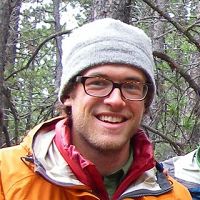Kelly, 2012
Subsurface Evolution: Characterizing the physical and geochemical changes in weathered bedrock of Lower Gordon Gulch, Boulder Creek Critical Zone Observatory.
Kelly, Patrick (2012)
Thesis submitted to the Faculty of the Graduate School of the University of Colorado in partial fulfillment of the requirement for the degree of Master of Arts Department of Geography
-
Boulder, GRAD STUDENT
Abstract
In rock below the surface, temperature swings are damped, water flow is limited, and biota are few. Yet rock weathers, presumably driven by these environmental parameters. I use rock strength as an indicator of rock weathering in Gordon Gulch in the Boulder Creek Critical Zone Observatory, a watershed at 2500 m underlain by Proterozoic gneiss intruded by the Boulder Creek granodiorite. Fresh rock is found at depths of 8-30 m in this area, and the thickness of the weathered rock zone imaged with shallow seismic refraction is greater on N-facing slopes than S-facing slopes (Befus et al., 2011, Vadose Zone J.). I use the Brazilian splitting test to determine tensile strength of cores collected with a portable drilling rig. Spatial variations in rock strength that we measure in the top 2 m of the weathered rock mantle can be connected to two specific environmental variables: slope aspect and the presence of a soil mantle. I find weaker rock on N-facing slopes and under soil. There is no clear correlation between rock strength and the degree of chemical alteration in these minimally weathered rocks. Denudation rates of 20-30 microns/yr imply residence times of 105-106 years within the weathered rock layers of the critical zone. Given these timescales, rock weathering is more likely to have occurred under glacial climate conditions, when periglacial processes prevailed in this non-glaciated watershed.
Incipient weathering of rock appears to be controlled by water and frost cracking in Gordon Gulch. Water is more effectively delivered to the subsurface on N-facing slopes, and is more likely held against rock surfaces under soil than on outcrops. These moisture conditions, and the lower surface temperatures that prevail on N-facing slopes also favor frost cracking as an important weathering process.
Citation
Kelly, Patrick (2012): Subsurface Evolution: Characterizing the physical and geochemical changes in weathered bedrock of Lower Gordon Gulch, Boulder Creek Critical Zone Observatory . Thesis submitted to the Faculty of the Graduate School of the University of Colorado in partial fulfillment of the requirement for the degree of Master of Arts Department of Geography.
Associated Data
Gordon Gulch: Lower - Soil Geochemistry - XRD and XRF analysis from shallow subsurface (2012)
2 components •
Gordon Gulch •
Geochemistry / Mineralogy •
Patrick Kelly
Explore Further

